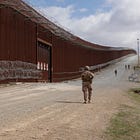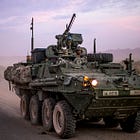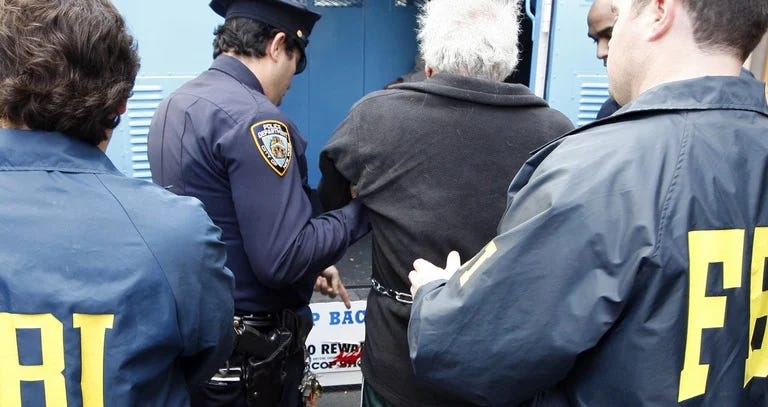Homeland Security: Cartels and Transnational Criminal Organizations Designated as Terrorist Organizations
The Alien Enemies Act of 1798 provides the President with wartime authority to detain or deport individuals who are natives or citizens of a designated enemy nation.
UNITED STATES - According to the U.S. Department of Homeland Security Investigations, Transnational Criminal Organizations (TCOs), including cartels, engage in the production and distribution of illicit synthetic drugs, notably fentanyl, and the trafficking of weapons and ammunition across international borders.
These activities pose significant challenges to U.S. national security and public safety. In 2024, U.S. Customs and Border Protection (CBP) and Homeland Security Investigations (HSI) reported the seizure of over 27,000 pounds of fentanyl.
During the same period, HSI initiated more than 5,800 narcotics-related investigations. In the first half of 2024, CBP confiscated nearly 3,000 weapons and over 654,000 rounds of ammunition.
Since April 2024, CBP has coordinated an expanded multi-agency operation targeting transnational criminal networks, including cartels, responsible for smuggling drugs, particularly fentanyl, from Mexico into the United States.
Legal Framework: The Alien Enemies Act of 1798
The Alien Enemies Act of 1798 provides the President with wartime authority to detain or deport individuals who are natives or citizens of a designated enemy nation.
This law allows such actions without a hearing, based solely on an individual’s country of origin or citizenship.
While historically applied during declared wars, its relevance has been raised in discussions regarding the treatment of illegal aliens linked to adversarial entities, including those associated with TCOs.
Red Flag Indicators Of High-Risk Activity
The following are red flag indicators of high-risk activity associated with FTOs and SDGTs, other transnational organizations, and their facilitators, according to the Department of Homeland Security Investigations:
Unusual Cash Transactions: Large, frequent, or unstructured cash deposits or withdrawals raise alarms. Cartels often deal in cash-heavy drug proceeds, while terrorist groups may use cash to avoid traceable electronic trails. For example, deposits just below reporting thresholds (e.g., $10,000 in the U.S.)—a tactic called "structuring"—or cash moved through funnel accounts across borders are common red flags.
Rapid Movement of Funds: Wire transfers or payments that move quickly through multiple accounts, especially across high-risk jurisdictions like Mexico, Colombia, or sanctioned countries (e.g., Iran, Syria), suggest money laundering. Look for funds entering from a cartel stronghold, then exiting to a third country within hours, or transfers lacking clear economic purpose.
Mismatch in Transaction Purpose: Payments tied to vague or inconsistent explanations— “consulting fees” or “import/export” with no supporting documentation—can mask illicit flows. Cartels might disguise drug money as legitimate trade, while terrorist financing might appear as charitable donations to front organizations. A business claiming to sell agricultural goods but moving millions without invoices is a classic sign.
Use of Shell Companies or Fronts: Accounts tied to entities with no physical presence, minimal assets, or ownership obscured through nominees point to layering tactics. Both cartels and terrorists exploit these to distance funds from their source—think a newly formed company in Panama wiring funds to a cartel-linked region with no apparent business history.
High-Risk Geographic Links: Activity involving countries known for drug trafficking (e.g., Mexico, Afghanistan) or terrorist financing (e.g., Somalia, Yemen) triggers scrutiny. This includes correspondent banking relationships or customers with addresses in these zones, especially if paired with other suspicious behavior.
Third-Party Involvement: Payments routed through intermediaries—such as money service businesses (MSBs), hawaladars, or unregulated crypto exchanges—complicate tracking. Cartels use MSBs to launder cash, while terrorists lean on informal value transfer systems like hawala to fund operations discreetly.
Anomalous Customer Behavior: Clients with sudden spikes in activity, no clear income source, or profiles inconsistent with their transactions (e.g., a low-income individual wiring $50,000) stand out. Politically exposed persons (PEPs) or those linked to sanctioned entities also raise flags, as they might facilitate cartel or terrorist networks.
Trade-Based Anomalies: Over- or under-invoicing in trade transactions—say, importing goods at inflated prices to move value—points to trade-based money laundering (TBML). Cartels use this to shift drug profits, while terrorists might exploit it for dual-use goods (e.g., chemicals with military applications).
Charity or Nonprofit Ties: For terrorist groups, donations to obscure charities, especially in conflict zones, can signal fundraising fronts. Cartels rarely use this, but they might co-opt legitimate businesses, so institutions check for unusual outflows to nonprofit entities with weak oversight.
Executive Order 14157: Designation of Cartels as Terrorist Organizations. Full Report:
Keep reading with a 7-day free trial
Subscribe to The Standeford Journal - News, Intel Analysis to keep reading this post and get 7 days of free access to the full post archives.









